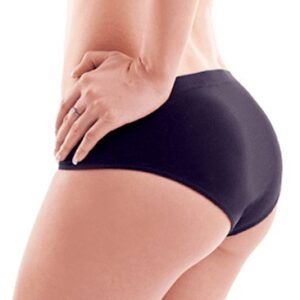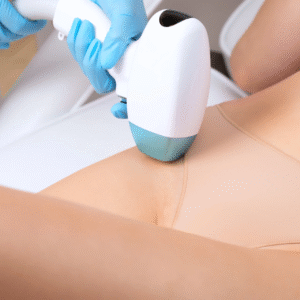In today’s world where body image plays a significant role in personal confidence, many seek effective ways to sculpt their bodies and eliminate stubborn fat. Among the various cosmetic procedures available, one has consistently gained popularity for its ability to target localized fat deposits—liposuction surgery. This surgical technique has helped countless individuals achieve a more contoured and aesthetically pleasing appearance. However, understanding its benefits, potential risks, and the recovery process is essential before considering this procedure. This comprehensive guide will walk you through everything you need to know about liposuction surgery to make an informed decision.
What is Liposuction Surgery?
Liposuction is a cosmetic surgical procedure designed to remove excess fat from specific areas of the body, such as the abdomen, thighs, hips, arms, and neck. Unlike general weight loss methods, liposuction focuses on sculpting and contouring by physically removing fat cells, resulting in immediate and noticeable changes. The surgery involves the insertion of a thin tube called a cannula, which breaks up and suctions out fat through small incisions. Several techniques have evolved over the years, including traditional suction-assisted liposuction, ultrasound-assisted, and laser-assisted methods. Each technique offers unique advantages depending on the patient’s body type and goals.
Benefits of Liposuction Surgery
One of the primary benefits of liposuction surgery is its ability to provide targeted fat reduction. For people struggling with stubborn fat pockets resistant to diet and exercise, liposuction offers a practical solution that enhances body contours. It can dramatically improve the appearance of problem areas, making clothes fit better and boosting overall confidence.
Beyond aesthetic improvements, liposuction can also contribute to better health outcomes. In some cases, reducing fat in specific areas may alleviate discomfort or improve mobility. For example, removing excess fat from the thighs can reduce chafing and skin irritation. Additionally, liposuction may be used in conjunction with other medical treatments, such as for lipomas (fatty tumors) or to harvest fat for transfer to other body parts, like in breast reconstruction or facial rejuvenation.
Another advantage is the relatively quick results. Unlike weight loss, which can take months to show significant changes, liposuction surgery reveals a slimmer, more sculpted figure shortly after swelling subsides. While it is not a replacement for a healthy lifestyle, the procedure can be a valuable kickstart or finishing touch to your body transformation journey.
Understanding the Risks
Like any surgical procedure, liposuction carries certain risks and potential complications that patients must be aware of before proceeding. The most common side effects include swelling, bruising, and temporary numbness in the treated areas. These usually resolve within a few weeks, but in some cases, they may persist longer.
More serious risks, though rare, include infection, blood clots, contour irregularities, and damage to underlying tissues. Choosing a qualified and experienced surgeon significantly reduces these risks. It’s essential to have a thorough consultation to discuss your medical history, expectations, and any pre-existing conditions that might impact the surgery.
Patients should also understand that liposuction is not a weight loss method but a body contouring procedure. It’s most effective for individuals close to their ideal weight but with localized fat deposits. Unrealistic expectations can lead to dissatisfaction, so clear communication with your surgeon about achievable results is critical.
The Recovery Process
Recovery after liposuction surgery varies depending on the extent of the procedure and the area treated. Generally, patients can expect some discomfort, swelling, and bruising for the first few days. Your surgeon will likely recommend compression garments to reduce swelling and support healing. These garments also help shape the treated area as your body adjusts to its new contours.
Most people can return to light activities within a few days, but strenuous exercise and heavy lifting should be avoided for several weeks to prevent complications. Follow-up appointments are crucial to monitor healing and address any concerns promptly.
Patience is key during recovery, as final results can take several months to fully manifest once swelling subsides. Maintaining a healthy diet and exercise routine after surgery will help sustain the results long-term.
Who is a Good Candidate?
Not everyone is an ideal candidate for liposuction surgery. Typically, candidates are adults in good overall health who are close to their target weight but struggle with isolated fat deposits. Good skin elasticity also plays a role in achieving smooth results, as the skin needs to adapt to the new contours.
People with certain medical conditions like heart disease, diabetes, or compromised immune systems may face higher risks and should discuss these thoroughly with their surgeon. Pregnant women and individuals with unrealistic expectations or body image issues may also be advised against the procedure.
Making an Informed Decision
Choosing to undergo liposuction surgery is a personal decision that should be made with careful consideration. Research your options, consult with board-certified plastic surgeons, and ask plenty of questions. Understanding the benefits and risks, along with the recovery timeline, will empower you to make the best choice for your body and lifestyle.
Remember, liposuction is a tool to enhance your natural beauty, not a quick fix for weight loss. Combining the surgery with a healthy lifestyle will maximize your satisfaction and long-term results.







